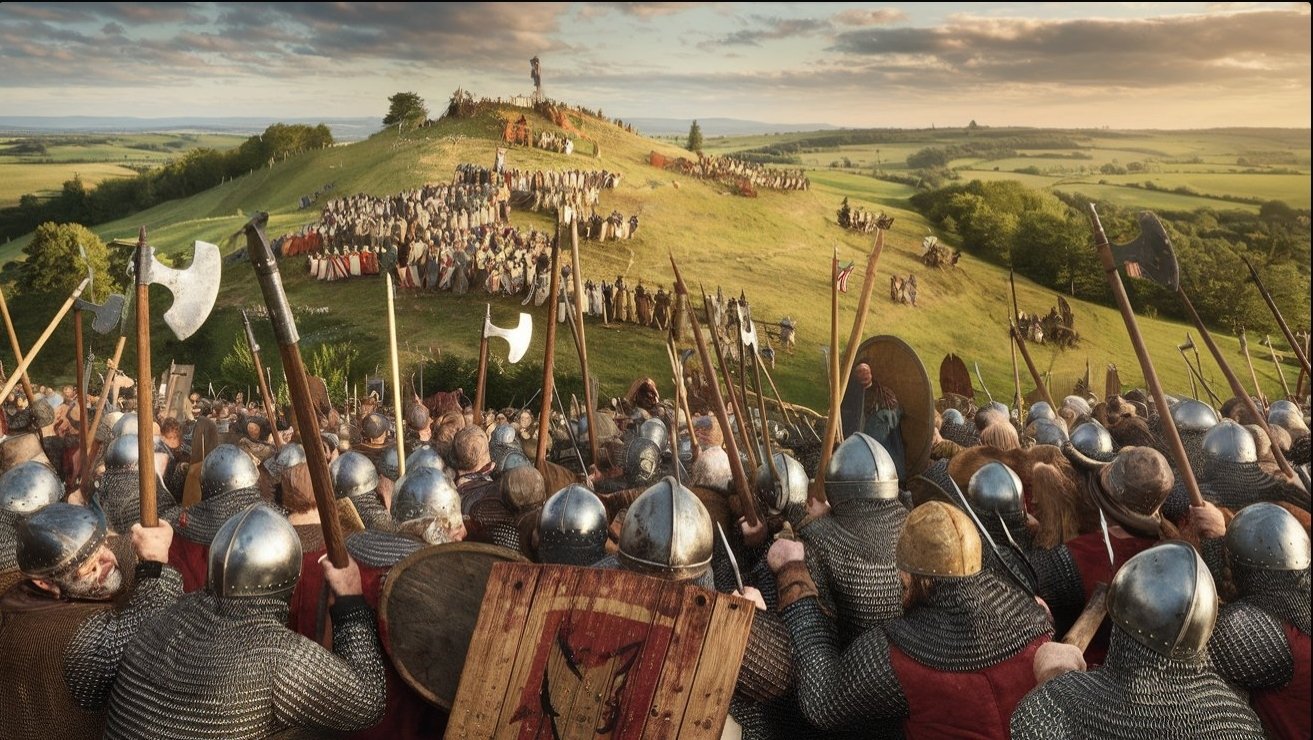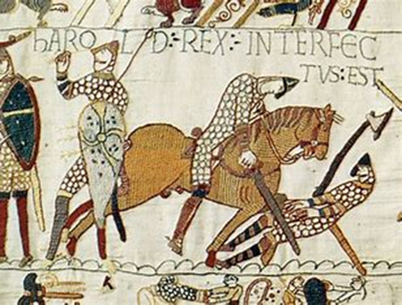
The Battle of Hastings, fought on October 14, 1066, is one of the most pivotal events in English history. It marked the end of Anglo-Saxon rule and the beginning of Norman conquest, reshaping the country’s culture, language, and governance.
Prelude to the Battle
In January 1066, the English King Edward the Confessor died without a clear heir, sparking a fierce struggle for the throne. Harold Godwinson, the powerful Earl of Wessex, was crowned king. However, his claim was contested by William, Duke of Normandy, who argued that Edward had promised him the throne years earlier, and by Harald Hardrada, King of Norway, who had his own dynastic claim.

The Invasion Begins
William amassed a fleet and a formidable army, including cavalry and archers, preparing to invade England. Meanwhile, Harold faced the threat from Norway’s King Hardrada in the north. In September 1066, Hardrada invaded England, leading to the Battle of Stamford Bridge where Harold’s forces decisively defeated the Norwegians.
However, this victory came at a cost. Harold’s army was exhausted following its forced march to the North,a brutal battle, and then having to march south again upon learning of William’s landing at Pevensey in southern England on September 28, 1066. Harold’s troops had marched about 185 miles in just four days to reach Stamford Bridge, and then had to quickly turn around and march south again to meet William. This left them physically tired before the battle even began.

The Battlefield
On the morning of October 14, 1066, the two armies met near Hastings in Sussex. Harold’s forces took a defensive position on Senlac Hill, forming a shield wall. The English army consisted entirely of infantry. It is possible that some of the higher-class members of the army rode to battle, but then dismounted when battle was joined to fight on foot. The core of the army was made up of housecarls, full-time professional soldiers. Their armour consisted of a conical helmet, a mail hauberk, and a shield, which might be either kite-shaped or round. Most housecarls fought with the two-handed Danish battleaxe, but they could also carry a sword. The rest of the army was made up of levies from the fyrd, also infantry but more lightly armoured and not professionals.

Most of the infantry would have formed part of the shield wall, in which the front ranks locked their shields together. Harold’s forces deployed in a small, dense formation at the top of a steep slope, with their flanks protected by woods and marshy ground in front of them. The line may have extended far enough to be anchored on a nearby stream.
William’s army, like Harald’s, was estimated at 7-8,000 men. It was composed of around 50% infantry, 25% archers, and 25% cavalry, in contrast to the English who were almost entirely infantry. The primary Norman armor consisted of chainmail hauberks, typically knee-length with slits for riding and sometimes featuring elbow-length sleeves. Some hauberks might have been constructed from scales attached to a tunic, with the scales made of metal, horn, or hardened leather. Head protection usually came in the form of a conical metal helmet with a vertical band protecting the nose bridge. Both horsemen and infantry carried shields; infantry shields were generally round and wooden with metal reinforcement, while horsemen transitioned to kite-shaped shields. Both infantry and cavalry commonly wielded long, double-edged straight swords. Infantry also utilized javelins and long spears, while some cavalry might have preferred maces over swords. Archers employed either bows or crossbows, and most were not armored.
The Initial Assault: William’s archers launched volleys of arrows, but the English shield wall on the hill held firm. The Norman infantry then advanced to attempt to break the English line to create gaps for their cavalry to exploit, but they too were repelled by the steadfast English defense.

The battle raged throughout the day although a lull probably occurred early in the afternoon, and a break for rest and food would probably have been needed. Then late in the day, in a brilliant tactical move, William ordered a feigned retreat. The English, thinking they had won, broke ranks to pursue the fleeing Normans. This was a fatal mistake. The Norman cavalry turned and attacked the disorganized English forces, breaking the shield wall.
As the battle raged on, Harold was struck down. Harold appears to have died late in the battle, although accounts in the various sources are contradictory. William of Poitiers only mentions his death, without giving any details on how it occurred. The Tapestry is not helpful, as it shows a figure holding an arrow sticking out of his eye next to a falling fighter being hit with a sword. Over both figures is a statement “Here King Harold has been killed”. It is not clear which figure is meant to be Harold, or if both are meant. With their leader dead, the English forces began to crumble despite a last stand nearby at a place known as the Malfosse (“evil ditch”).

Aftermath and Legacy
William the Conqueror was crowned King of England on Christmas Day 1066. The victory at Hastings led to significant changes in English society:
- Feudal System: William introduced the Norman feudal system, redistributing land to his Norman followers and creating a new aristocracy.
- Cultural Transformation: Norman culture, language, and architecture had a profound influence on English life.
- Domesday Book: To assess his new kingdom’s wealth, William commissioned the Domesday Book, a detailed survey of England’s lands and resources.
The Battle of Hastings is immortalized in the Bayeux Tapestry, a vivid embroidered account of the events leading up to and including the battle. This remarkable artifact provides invaluable insights into the era and the battle itself although it remains unclear whether Harold is the soldier with an arrow in his eye or the one being run down by Norman cavalry.





